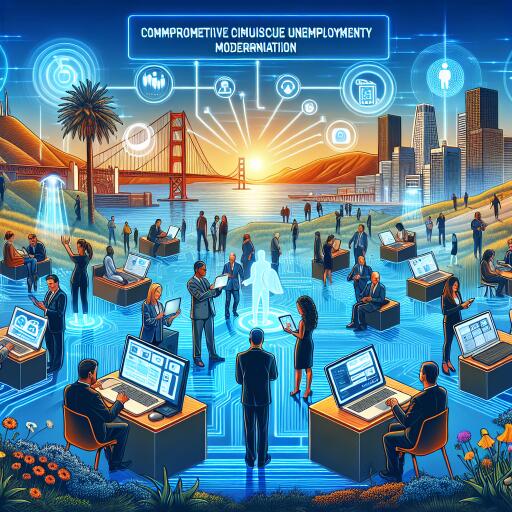California Embarks on Ambitious Overhaul of Unemployment System
In the early days of March 2020, as businesses abruptly closed, few could predict the protracted battle the California Employment Development Department (EDD) was about to face. This period marked the start of a grueling phase for the EDD, with call volumes surging from a few hundred thousand annually to millions. The sudden spike in demand revealed the fragility of a system burdened by outdated technology and prolonged underfunding.
The onslaught of claims pushed the department’s capacity to its limits, with a 16% unemployment spike revealing the vulnerabilities of its decades-old infrastructure. This crisis, however, served as a critical learning curve. “We’ve been through the fire and know the limits of what we can handle. It’s clear now more than ever that a comprehensive overhaul is necessary, and we’re on it,” shared an EDD representative.
A cornerstone of this transformation is EDDNext, an initiative aimed at modernizing the department’s interaction points, which range from claim filing to customer service. A significant upgrade is the introduction of a new claims processing portal that promises a streamlined, user-friendly experience. “We kicked off with reimagining how Californians file claims. Our new system, built on robust and scalable cloud technology, ensures a smoother process for everyone,” mentioned the project’s deputy director.
Improvements aren’t just digital. Recognizing the critical need for human support, the department is also revamping its call centers, transitioning to a more resilient and flexible solution that promises reduced wait times and improved service. “Last week, we launched our new call center technology in Fresno, focusing first on our disability insurance services. It’s a game-changer for both our staff and the communities we serve,” he added.
The drive for modernization doesn’t stop there. The department is setting the stage for the replacement of its ancient mainframe-based claims management system, a move eagerly anticipated by internal teams and external observers alike. “Updating this system is overdue. We’re drafting a request for proposals as we speak, aiming for a solution that’s not only modern and efficient but also adaptable to future needs,” the deputy director explained.
Another piece of the puzzle is the overhaul of the department’s document management system. “With millions of paper forms processed annually, our old system was simply no match for the volume and complexity of today’s needs. We’re close to securing a modern solution that will greatly enhance our operational efficiency,” he shared.
Despite fiscal challenges, including a significant state budget deficit and impending cuts across various sectors, the project’s leaders remain optimistic. The pandemic underscored the dire consequences of postponing necessary investments in critical infrastructure. “The support and commitment from our leadership underscore the importance of this project. We’re not just planning for today but for a future where we can serve Californians more effectively,” he concluded.
California’s ambitious undertaking to revamp its unemployment insurance system reflects a broader recognition of the need for resilient, efficient government services. As EDDNext progresses, it sets a precedent for how states can adapt to evolving demands through innovation and strategic planning.








